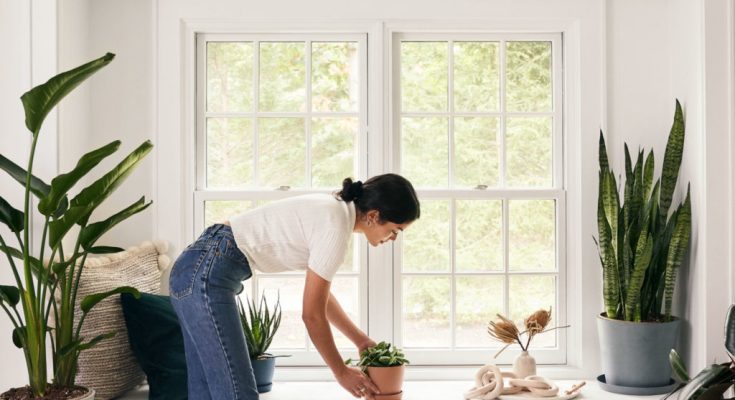You can become a confident and accomplished plant parent with these key tips for new indoor plant owners.
New to plant parenting? It can feel intimidating to have a plant in your care, but owning plants is a relaxing and fun hobby. From the outside, you might assume plant care is complicated, time-consuming, or that it has more to do with luck than with skill. We’re here to tell you that none of this is true — anyone (including you) can have a green thumb. Let’s get into the basics!
Tip 1: Get to know your plant
Each type of plant is different. With time and experience, you will begin to recognize the needs of individual plants.
Some plant varieties require very little attention and don’t need to be fussed over. Just let them be and enjoy the positive effects they have on your home.
Other plants need a bit more TLC. Certain plants such as tropical houseplants need consistent temperatures, some plants are sensitive to treated municipal tap water, and others need the moisture in their soil to be just so. Read the care card included with your plant or check out our A-Z Plant Care Guide to learn about the individual preferences of common houseplants.
Tip 2: Don’t water your plant too frequently
When it comes to watering, it’s important to be aware of how often you are watering your plant. As you read through the care card information for your specific plant, pay close attention to the watering instructions.
One of the most common mistakes we see new plant parents watering their plants too often. Most potted houseplants prefer their soil volume to dry out 50% to 75% of the way between waterings (use your finger or a wooden chopstick to test the soil). Plants do not like to sit in soggy soil, so make sure your pot has a drainage hole and any excess water is removed from the saucer after watering.
Tip 3: Choose the right spot
It’s all about the light when choosing the right spot for your indoor plant. Plants have different preferences when it comes to light exposure, so go back to our A-Z Plant Care Guide to see what your specific plant wants.
Some of the best indoor plants, like the Bamboo Palm, Monstera, or Philodendron Heartleaf are fairly low maintenance and can adapt and thrive in a myriad of light environments from low to bright, indirect light. Other plants, like the Hedgehog Aloe need bright light for most of the day to thrive. Some plants can even adapt to darker, low light areas.
If you need help figuring out what type of light you have and what plants will do well in that spot, check out our Lighting 101 Guide!
Tip 4: Be patient!
Most plants take a few weeks to acclimate to their new environment. If a few leaves drop off in the first couple of weeks, don’t panic! Most likely, this is perfectly normal and is just a sign of your plant adjusting to its new home. The key is to maintain the proper soil moisture, lighting, and a consistent temperature until you see signs of new growth.
Tip 5: Ask for help
When you purchase a plant from Bloomscape, you have access to free one-on-one expert advice from our Grow-How® Team throughout the life of the plant. Reach out — our team is here to help!



